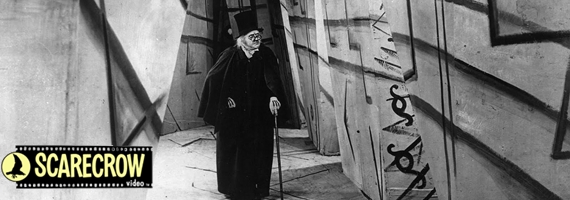![caligari_still1[1]](http://www.frenchtoastsunday.com/wp-content/uploads/2013/03/caligari_still11.jpg)
VERSUS THE SCARECROW EPISODE EPISODE FOURTEEN: Shut Up!! I decided to challenge myself and really open the doors of my film knowledge and take on “The Scarecrow Video Movie Guide”. It’s 808 pages of movies and movie reviews from some of the most knowledgeable movie people you don’t know. It’s a book put together by a staff that praises, and destroys, some of our favorites and not so favorites. You can read the rest of my series here.
Just a quick refresher: each episode, I’m going to tackle three films from three different categories. Two films will be films I’ve never seen before and one will be one I’ve seen before or own. For the new films, well, new to me, I’m going to review them like a typical FTS review using the TOAST Rating system. But, for the films I’ve seen, I’m going give a quick paragraph or two about why I like or don’t like the film. We’ll try to include the poster and trailer for each film. “….and here. We. Go!”

This episode of Versus The Scarecrow is dedicated to silent film. I’ve previously reflected on the masterpiece that is Metropolis (Episode 6) but this time, I’ll be watching three silent films I have never seen before, so expect three reviews instead of the usual two and a reflection. I’ll be watching The Cabinet of Dr. Caligari (1920), The Phantom of the Opera (1925), and I’ll FINALLY get around to the quintessential silent classic Nosferatu (1922).

The Cabinet of Dr. Caligari (1920) Directed by Robert Wiene. Starring: Werner Krauss, Conrad Veidt, Friedrich Feher. IMDB says: “Dr. Caligari’s somnambulist, Cesare, and his deadly predictions.”
The Cabinet of Dr. Caligari is the type of film Tim Burton would have made had he been around in the 1920s. The colors and shapes and set designs that were used were different and very progressive for it’s time. The production adds to an already intriguing story that throws a couple curveballs at you, leaving many critics to believe that this was the first film to implement the “twist” and “twist ending”. Even having seen the amount of films I’ve seen and seen the types of twists that I’ve seen, the film was still able to catch me off-guard and surprise me which attests to the films ability to stand the test of time.
The film tells the story of Francis and his encounter with Dr. Caligari. Dr. Caligari came to town (no pony riding was involved) boasting about a somnambulist (Sleepwalker) that he can control and get to predict the future. His somnambulist, named Cesare, can predict death. But when his predications begin to come true, the town becomes concerned and Francis begins to fear for his life. The story is told through flashbacks, flash forwards, and speech cards, all presented in different colors to show differences in time and mood.
Dr. Caligari shows you that silent films aren’t just black and white stories told on shoddy sets. It shows you how ahead of their time they really were and how even then, they were already beginning to push the boundaries of storytelling. The accompanying soundtrack/score is solid for the story being told, but at times feels out of place. It doesn’t take you out of the film, but it is something you notice because… well, it’s the only sound you hear. If you’ve got a little over an hour to spare, do check this out on Netflix Instant Watch.


Check back tomorrow to read my review of The Phantom of the Opera and then again on Thursday for the conclusion of episode 14 with my reflections on Nosferatu . If you're interested in more, you can find the rest of the Versus The Scarecrow series here.

